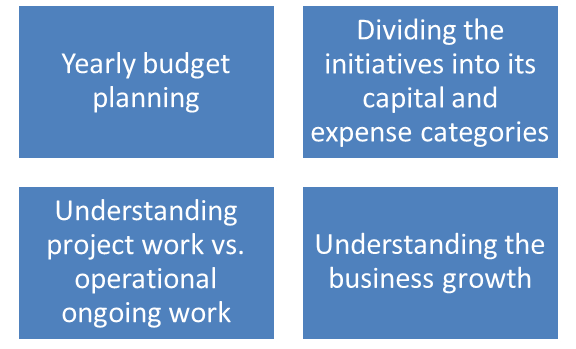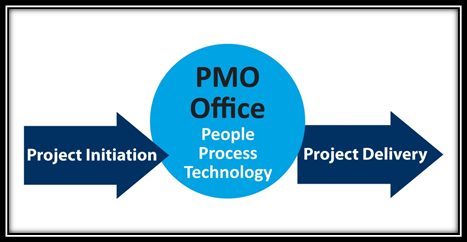Project Management Office (PMO) implementations need project portfolio management and project management tools to sustain the PMO function
Introduction
Part 1 covered requirements of creating a PMO and the steps needed for a successful PMO. This part also addressed a breakdown of the elements and processes which constitute the many components of a PMO.
Part 2 addressed the challenges that face a newly formed PMO and offered some successful actions to address these challenges.
Part 3 began the detailed exploration of the four elements mentioned in Part 1 that are essential for a successful PMO. Part 3 covered the first two elements: (1) processes and methodology development and (2) project management development.
In Part 4, the final two elements will be explored in detail. The last two elements for a successful PMO are: (3) project portfolio management and (4) portfolio and project management tools. In addition to focusing on the project portfolio and tools, attention will be given to related technology (which enables people to become more efficient and productive in the use of their processes).
Project Portfolio Management
The overall goal of project portfolio management is to select, prioritize, fund and manage the collection of funded initiatives through projects which, when measured collectively, produce maximum benefits. Some organizations have a portfolio function outside of their Project Management Office (PMO), while other organizations have their PMO manage the portfolio. In either case, the owner of the portfolio function determines the process for project selection, monitoring, and control. In addition, the organization budget process must be supported by identifying projects, by regular reviews and audits of the project portfolio and by frequent reviews and adherence to the approval process for managing changes and escalations.
Assessment
While the size of an organization and its culture and requirements may affect the approach an organization takes, there are standards or baseline requirements for determining how the required work will be performed.
There are two types of assessments that are needed, according to the Project Management Institute. One is the assessment of organization readiness and ability to take on an endeavor of the magnitude of a global PMO. Second is the initiation of a process for selecting, managing and controlling these projects throughout the yearly budget cycles, as well as managing the interface with the organization project tactical delivery.
Action Plan
Once an assessment is completed with a decision to establish a portfolio function, managing the transition becomes the number one priority. It is important that all affected organizational areas are involved and accept the selection, monitor and control process produced by the PMO. Establishing this process can be done by the organization’s PMO itself or by engaging professional services’ Subject Matter Experts (SME). Action plans will vary in length and scope depending on the depth and breadth of the process established, on the required improvements, on the organization’s culture and structure, and on whether portfolio management lies within or outside the PMO. The common thread is establishing the continued monitoring process and the continuous improvement process which result from the monitoring and control matrix.
If the organization is ready to take on portfolio management, the organization should have been performing some of the required activities. These activities can be summarized by the following steps:

Figure 1: Portfolio management summary steps
Further, an organization of this maturity already has some kind of established evaluation criteria even if these criteria are subjective in the prioritization of projects. These organizations are ready to formalize their portfolio management practice.
Formalization of the process, whether performed by internal or external resources, must provide an understanding of current practices and a road map, which takes into account the organizational requirements and culture. The action plan should include identification of the governance model, value criteria, short term and long-term risks, and alignment with the business vision and mission.
Once these have been identified, then instructions for every governance body describing their roles and responsibilities as well as instructions regarding handovers, evaluation gates, submission, review, etc. are needed.
Lastly, work on the continuous improvement process for refining and tracking changes to the portfolio whether adding, deleting, or delaying projects should be assessed. This assessment should apply to the current delivery of projects and address value, benefit, and strategy.
Measures and Benefits
For continuous improvement to occur there is a need to establish a tracking, monitoring, and communicating mechanism. There would be a tremendous benefit if this process were automated so that changes in one place could be flagged, identified, and assessed prior to execution. In addition to simple notification, executives and governance boards could acquire even more quality information from reporting and dashboards. This information would be invaluable since taking actions based on informed actionable data is far superior to making a guess or using a gut feeling which is today’s practice in the absence of formal portfolio management. Some of the benefits would be the readiness of data, the dynamics of change, and the alignment with the strategy (top-down) as well as understanding impact on current project delivery (bottom-up).
Portfolio and Project Management Tools
The overall goal of portfolio and project management tools is to advance the success of methodology and process adoption through the implementation of tools that will support portfolio management and project management efforts. According to the Project Management Institute, a PMO’s role in using portfolio and project management tools is to define organizational requirements, establish benefits from using and automating project processes, implement and train the organization, and coordinate ongoing operation of tools for portfolio, project, and resource management. Additionally, the PMO’s role is to establish the required procedures and guidance for well-focused training across all levels of the organization to support availability and automation of data through dashboards and PM status reporting.
Assessment
As stated before, the size of an organization, its culture and requirements may affect the approach it takes in implementing project and portfolio tools; there are standards or baseline requirements that must be achieved to determine what work is required and how it will be performed. Having proven processes and procedures in place is a key to successful project/portfolio tool implementation — although not mandatory. Many tools today are at an advanced level for project and portfolio management and can be a catalyst for change within an organization or may actually change the way business is done (i.e. influence process alignment, enhancement, and/or a change to the organization’s approach to project management).
Two assessments should be performed. The first assessment includes the readiness of the organization’s project management process, the maturity of the methodology, and the balance of the requirements established to the benefits desired from the tool.
The second assessment pertains to the investment in resources (hardware, software, and infrastructure) and in on-going operational support. Whether the work will be performed internally or externally to the organization, an SME with expertise in tools deployment and process alignment are keys to successful implementation and assurance of smooth on-going operation support.
The result of the assessment should feed into the action plan and should include not only the scope, deliverables, etc, but also the rollout, communication, and training strategy. In addition, there should be an operation and adoption strategy, as well as plans for measurement and continuous improvement.
Action Plan
In any tool implementation, there are the standards to deploying an application. Mature organizations have many tools already in place including ERP, CRM, CMS, etc. EPM (Enterprise Project Management) is no different from any of these known enterprise tools or applications. Planning is essential and should be followed by a thorough and detailed execution plan.
To summarize, an EPM implementation can be described by the following three phases: Pre-implementation preparation, Implementation, and Post-Implementation.
Pre-Implementation activities include identification of system and business requirements, process alignment, resources, projects to be tracked, reporting needs and the type of information management required at all levels of the organization. Staff the project as in any project, and plan for all required resources. Decisions regarding whether to host the solution or not should be made prior to vendor evaluation, organizational requirements, feasibility and Return on Investment (ROI). Whether hosted or not, the planning work is needed to ensure successful implementation.
Implementation activities include server set-up and installations. A test environment is set-up which mirrors production if done in-house and if not, then service level agreements (SLAs) and production operation must be worked out with the EPM supplier. The testing plan should be carefully executed to address infrastructure, network, and security, as well as user acceptance from a go-live perspective. Preparation for go-live is essential in terms of loading resources and projects, adding all the value criteria for portfolio selections, etc. Planning for training whether in-house or by a vendor needs to take into account the role of each trainee whether a project manager, executive, administrator, or contributor. Today’s tools have different requirements and learning tracks for each of these roles.
Post Implementation activities are very crucial and include the following: (1) Immediate monitoring for post implementation issues, (2) Lessons learned by the project team, (3) Satisfaction survey on the rollout and training, (4) On-going support per the documented process and procedures, (5) Monitoring time sheet entry and (6) Acceptance compliance. Further, to continuously operate and support an EPM application effectively, careful planning is needed to establish procedures to streamline the channeling of all issues, changes, and change requests. Lastly, post implementation activities should include: Accommodate the learning curve, Train new employees and Ensure consistency.
Measures and Benefits
There are immediate benefits from implementing project and portfolio tools and these are:
- Immediate and increased visibility of investment tracking at the portfolio level and at the project level and a quick comparison of budget allocated amounts to the actual reported data.
- Ability to plan resource allocation from the portfolio view, and analyze and manage resource workloads through enhanced utilization and leveling
- Improved team collaboration with the ability to share documents and resources
- Ability to associate risks and issues with work and deliverables
There are additional realized benefits from implementing project and portfolio tools and these are:
- Consistent metrics and bench marking pertaining to time, schedule, and budget performance
- Leadership can get reports pertaining to specific projects at the delivery level or change the portfolio mix and see the impact in a real time manner
- Standards and consistency across functional projects becomes much more effective
- The ability for the PM to view the resource allocation for the past, present, and future in a dynamic environment is priceless.
- The ability for leadership, project manager, and resource managers to plan future projects and resources based on analytics so that decisions become more predictable.
Conclusion
Undertaking the implementation of a global Project Management Office is a major endeavor for an organization and offers the opportunity for significant investment returns from managing the funded initiatives. However, it also carries the risk of many obstacles that can be avoided by adhering to the guidelines and principles presented in these articles.







